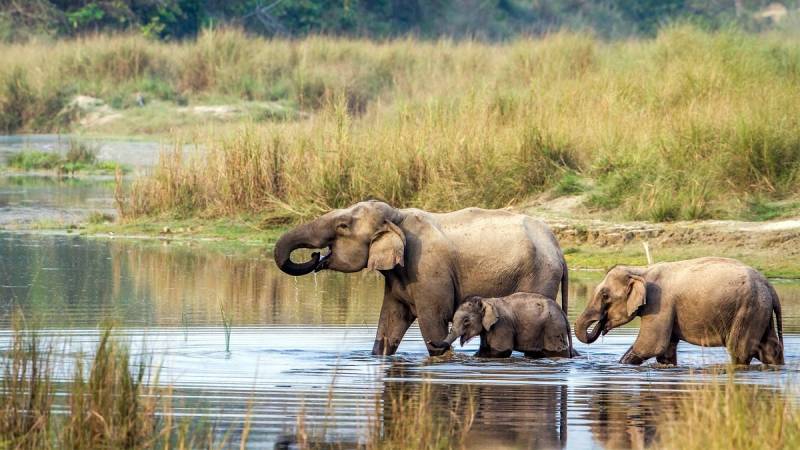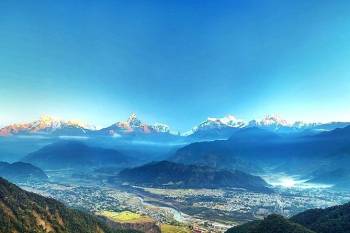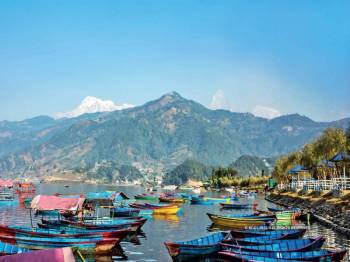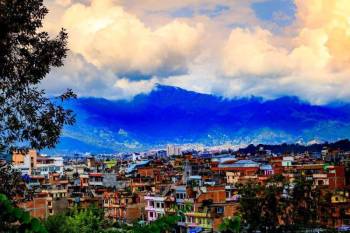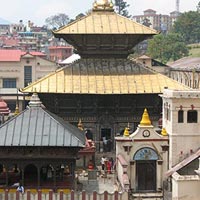- Kathmandu
- +977-9851113814
Nepal Golden Triangle Tour 07 Nights 08 Days Kathmandu - Pokhara - Chitwan
Duration : 7 Nights / 8 Days
Destination Covered : Kathmandu, Pokhara, Chitwan
Tour Activities : Jungle Safari, Sightseeing
Tour Themes : Wildlife, Hill Stations & Valleys, Religious & Pilgrimage, Culture & Heritage
Price on Request
Kathmandu, Pokhara and Chitwan Tour Overview
Kathmandu: Kathmandu Located in the foothills of the Himalayas, the Kathmandu Valley World Heritage property is inscribed as seven Monument Zones. These monument zones are the Durbar squares or urban centres with their palaces, temples and public spaces of the three cities of Kathmandu (Hanuman Dhoka), Patan and Bhaktapur, and the religious ensembles of Swayambhu, Bauddhanath, Pashupati and Changu Narayan. The religious ensemble of Swayambhu includes the oldest Buddhist monument (a stupa) in the Valley; that of Boudhanath includes the largest stupa in Nepal; Pashupati has an extensive Hindu temple precinct, and Changu Narayan comprises traditional Newari settlement, and a Hindu temple complex with one of the earliest inscriptions in the Valley from the fifth century AD. The unique tiered temples are mostly made of fired brick with mud mortar and timber structures. The roofs are covered with small overlapping terracotta tiles, with gilded brass ornamentation. The windows, doorways and roof struts have rich decorative carvings. The stupas have simple but powerful forms with massive, whitewashed hemispheres supporting gilded cubes with the all-seeing eternal Buddha eyes.
Pokhara: Pokhara isa metropolitan city in the Western region of Nepal. Itis a valley cradled among-st mountains and hills with meandering rivers.It isamajor tourist destination due to its panoramic views. Once you enter the vicinity of this city, you are greeted with magnificent views of the mountains
Chitwan: Chitwan has a particularly rich flora and fauna and is home to one of the last populations of single-horned Asiatic rhinoceros and is also one of the last refuges of the Bengal Tiger. Chitwan National Park (CNP), established in 1973, was Nepal’s first National Park. Located in the Southern Central Terai of Nepal, it formerly extended over the foothills, the property covers an area of 93,200 hectares, and extends over four districts: Chitwan, Nawalparasi, Parsa and Makwanpur.
Kathmandu:Kathmandu Located in the foothills of the Himalayas, the Kathmandu Valley World Heritage property is inscribed as seven Monument Zones. These monument zones are the Durbar squares or urban centres with their palaces, temples and public spaces of the three cities of Kathmandu (Hanuman Dhoka), Patan and Bhaktapur, and the religious ensembles of Swayambhu, Bauddhanath, Pashupati and Changu Narayan. The religious ensemble of Swayambhu includes the oldest Buddhist monument (a stupa) in the Valley; that of Boudhanath includes the largest stupa in Nepal; Pashupati has an extensive Hindu temple precinct, and Changu Narayan comprises traditional Newari settlement, and a Hindu temple complex with one of the earliest inscriptions in the Valley from the fifth century AD. The unique tiered temples are mostly made of fired brick with mud mortar and timber structures. The roofs are covered with small overlapping terracotta tiles, with gilded brass ornamentation. The windows, doorways and roof struts have rich decorative carvings. The stupas have simple but powerful forms with massive, whitewashed hemispheres supporting gilded cubes with the all-seeing eternal Buddha eyes.
Pokhara:Pokhara isa metropolitan city in the Western region of Nepal.Itis a valley cradled among-st mountains and hills with meandering rivers.It isamajor tourist destination due to its panoramic views.Once you enter the vicinity of this city,you are greeted with magnificent views of the mountains
Chitwan:Chitwan has a particularly rich flora and fauna and is home to one of the last populations of single-horned Asiatic rhinoceros and is also one of the last refuges of the Bengal Tiger. Chitwan National Park (CNP), established in 1973, was Nepal’s first National Park. Located in the Southern Central Terai of Nepal, it formerly extended over the foothills, the property covers an area of 93,200 hectares, and extends over four districts: Chitwan, Nawalparasi, Parsa and Makwanpur.
The park is the last surviving example of the natural ecosystems of the ‘Terai’ region and covers subtropical lowland, wedged between two east-west river valleys at the base of the Siwalik range of the outer Himalayas. The core area lies between the Narayani (Gandak) and Rapti rivers to the north and the Reu River and Nepal-India international border in the south, over the Sumeswar and Churia hills, and from the Dawney hills west of the Narayani, and borders with Parsa Wildlife Reserve to the east. In 1996, an area of 75,000 hectares consisting of forests and private lands surrounding the park was declared as a buffer zone.
Kathmandu, Pokhara and Chitwan Tour Itinerary
More Details about Kathmandu, Pokhara and Chitwan Tour
Inclusions
- Hotel
- Sightseeing
- Traditional welcome drink on arrival(Non alcoholic)
- Assistant Guide in arrival and departures / Hotels
- 03 Nights’ accommodation at Kathmandu hotel on mention board basis
- 02 Nights’ accommodation at Pokhara hotel on mention board basis
- 02 Nights’ accommodation at Chitwan hotel on mention board basis
- Jungle activities(Tharu Dance,Elephant Safari,Canoe trip,Elephant breeding center,Jungle walk)
- Chitwan National Park fee
- 01 liter mineral water will be serve during trip
- Hindi /English Tour Guide during trip(Group above 10 Pax)
- All sightseeing and excursions as mentioned in the itinerary.
- All transfers & sightseeing by private air condition vehicle.
- All vehicle parking fees at the attractions.
- Round trip transportation for Kathmandu - Pokhara - Chitwan -Kathmandu by private basis in A/C vehicle.
- Vehicles are not to be at disposal and are available as per itinerary only (point to point basis).
- All Nepal Government taxes.
Exclusions
- International Flight Airfare.
- Domestic airfare
- Entrance fees
- Expenses due to the situation beyond our control (Such as; landslides, natural calamities, road blockade, political disturbance, flight cancellation etc.)
- Expenses of personal Nature.
- Medical expenses.
- Manakamana Cable Car tickets.
- Boat ride fee on Phewa Lake.
- Monuments entrance fees as applicable & payable fee on the spot.
- Tips and Gratuities ( Expected ).
- Other Services not mentioned in cost including.
- Personal Insurances.
Payments Terms
- 30 % payments: At the time of confirmation.
- Full payment: 07 days Prior to Nepal arrival.
NOTE
- By making reservations with our travel agency or its associates and depositing your advance payment with agents, our representatives, or us you agree to each of the foregoing terms and conditions and agree that you are thereby bound. You also acknowledge that you have carefully read and understood the foregoing terms and conditions.
Cancellation & Refund Policy
- 30 days prior to departure 10% of the tour cost.
- 15 days prior to departure 50 % of the tour cost.
- 06 days or less no refund will be made.
- Our cancellation policy applies in every instance. There will be no exception for any reasons therefore; we strongly recommend that you purchase trip cancellation insurance. This low cost insurance protects all deposits and payments should you have to cancel your trip due to personal or family illness. Should you or anyone in your choice purchase this insurance, please deal directly with the insurance company. Baggage and accident insurance are also available.

